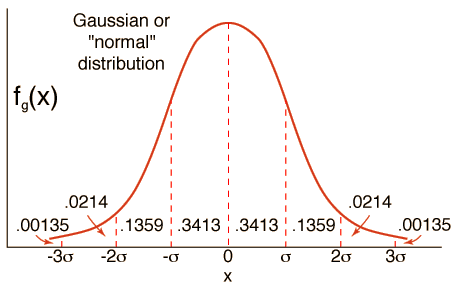Test scores used to be fairly simple. If a teacher gives a hundred-item exam and you get 80 questions right, you get a B-. Get a 93, and you get an A-. And if you perfect the score, you get a 100% or an A. It’s pretty straightforward – until your teacher decides to grade on a curve.
But what does grading on a curve mean?
Grading on a Curve: Background
Grading on a curve means that you (as a student) and your grade in an exam is relative to the grades of your classmates. While it’s not required for all teachers to practice curving on a grade, plenty of teachers in all types of formal education do this when they think it’s necessary to help more students pass. When a teacher grades on a curve, they adjust their class’ scores accordingly so that those who need the grade boost will get it and pass without these changes becoming unfair to those who scored high.
Used correctly, curving can benefit students and ensure that all students receive the same standardized scores. Incorrectly, however, and there will be a sense of increased competitiveness among students (even to the point of some students sabotaging other students just to get ahead) and unfairness. There are many ways teachers curve grades, but we’ll get to that later.
Why Do Teachers Grade on a Curve?
The concept of testing is that a teacher objectively sees how well their students understand the lesson. However, most educational systems have come to realize that the creation and designing of tests could make it very subjective. For example, some teachers may make tests extremely easy for a certain grade level that nearly the whole class passes, while some teachers may make tests too difficult that only one or two reach the passing mark. While these cases are possible to happen even in well-designed tests, they are highly unlikely to happen.
In a correctly-designed test, the students’ scores on a graph would form what’s known as a Bell Curve, also known as the Gaussian Distribution or Normal Distribution.

The Bell Curve shows a normal distribution of any given set of data. In normal distributions in terms of test scores, most of the data will be towards the middle or mean (which signifies that most students passed), while there will only be a few outliers on either side (those who got the highest scores and those who got failing scores). If test scores were normally distributed in a class of 50:
- One student would get an A (2% of the class)
- Seven students would get a B (14%)
- Seventeen students would get a C+ (34%)
- Seventeen students would get a C- (34%)
- Seven students would get a D (14%)
- One student would get an F (2%)
This can vary, of course, if some teachers split it further into the plus and minuses for each letter grade.
Can Grades Really Be Distributed?
Now, you might be thinking that there are plenty of instances where this doesn’t happen and there are more students who fail or pass – and you’re correct. But, let’s put it into an example. Let’s say Ms. Halsey finished grading her class’ exam and found that most of the students got C’s, fewer B’s and D’s, and only one or two A’s and F’s. Using these statistics, she knows the tests she designed did its job and was just the right amount of difficulty for her class’ level.
But what happens if this distribution changes? Let’s say that Ms. Halsey’s class mostly got A’s and B’s. Assuming no one cheated, the test did not fulfill its purpose because it wasn’t challenging enough. Maybe it’s because Ms. Halsey’s questions were too easy, or her class is the special class for honor students, so they need to be challenged according to their level. On the other hand, if most of the grades were on the lower end of the curve, then she knows she made the test too difficult.
Different Ways to Curve Grades
There are multiple ways to curve grades. Some ways involve adjusting everyone’s grades so that everyone moves closer towards the higher end of the curve. Other teachers, however, give a limited number of slots per grade level (based on the Bell Curve) and base students’ position on the curve on how well they perform. Here are a few popular methods.
Bonus Points
If it appears that most of the students got a certain question incorrectly, a teacher can choose to remove that question from the exam. Instead of reducing the total number of questions in the exam, the teacher can simply add an additional point to everyone’s final score. Those who got the answer right will also be given an extra point to keep it fair.
It’s a method used when it is obvious that most of the students were unequipped to answer the question. While everyone will benefit from this type of curve, the drawback is that students won’t really learn from this mistake unless the teacher re-teaches them and then adds a similar question in the next exam.
Highest Student Gets a 100%
If a teacher determines that their exam was too difficult, making the highest scorer receive 100% and adjusting everyone accordingly is a fair way to determine how much they should adjust their students’ grades relative to the highest scorer.
Let’s say that, in Ms. Halsey’s class, Abigail gets 85% while most of her classmates are at the lower end of the curve. To raise that average up, Ms. Halsey can choose to add 15 points to Abigail’s final score, giving her a 100%. She will then add 15 points to everyone’s grades to adjust everyone’s scores along the curve.
The good thing here is that everyone benefits according to the highest scorer, so it’s not unfair to people like Abigail who earned the highest grade in the class. However, also because of the curve, there will be some students who will still have failing marks regardless of the curve. The maximum 15 additional points to Abigail’s score might give her a 100, but for Zoey who has 40 points, the additional 15 points still puts her at an F. Ms. Halsey could add more than 15 points to everyone’s grades, but only if she would be willing to let those additional grades be extra credit on Abigail’s part, otherwise it wouldn’t be fair for Abigail if everyone got additional points to their scores while she doesn’t benefit from it.
This method is dependent on the fact that no one got 100%. If most of the students received low scores but one student received a 100%, it would be unfair to adjust everyone’s scores when that one A-student doesn’t receive anything else. Also, if the highest scorer received a 98 or 99%, there wouldn’t be much of a difference.
Actually Grading on a Curve
Used by professors and those who want to enforce the normal distribution, one popular (or, in some cases, unpopular) methods of grading on a curve is when your actual exam score in comparison to others determines your final grade.
Earlier, we established the normal distribution based on percentage. Let’s say that Ms. Halsey decides to use this method in a class of 100 students. Given the distribution percentages, (only 2% will get an A, 14% will get a B, and so on) she decides who will get what based on the scores.
So, let’s say that in that class, the two highest scores got a 94 and an 89 and, thanks to the curve, will be the two students who get A’s. It makes no difference for the one with the 94% as they would have gotten an A even if Ms. Halsey didn’t curve. The other one with the 89, however, benefited from the curve because they got an A because of it when, without the curve, an 89% would be equivalent to a B.
The next grade available, a B, will be given to the next top 14 scorers. Those whose grades fall in line with a B already will not really be affected by the curve, while those whose grades are lower than a B but rank within the next 14 of the class will benefit. This will go on until it reaches all the way to F. Those who actually have F marks will be here, but those who got D or better but got one of the lowest in the class will be at a disadvantage.
The Downsides of Grading on a Curve
Why Grading on a Curve Breeds Competition
A lot of students disagree on grading on a curve because it breeds unnecessary competition on scores rather than focusing on one’s ability to understand the material. Let’s say that in Ms. Halsey’s class, there are 10 students who understand the material completely and can get A’s in a regular non-curve grading system. However, if they were in a class of 40, curving will only allow eight people to get A’s. This means that it’s not enough to get a grade of 90 and above to get an A; if you get a 94 and eight other people get higher, you end up getting a grade lower than you deserve.
Some teachers even foster this competition in their class. Most law schools require their teaching faculty to grade on a curve, which means only a handful can earn the highest grades. While I can’t really speak for all law students, I knew a lawyer back when he was still in law school. He told me of a classmate of his who was so competitive of the curve that, for an exam for one of their courses, his classmate handed out reviewers filled with wrong information, sabotaging many students he saw was a threat to his grade on the curve.
Curving Restricts Those Who Can Excel
If you remember any class you’ve ever taken, you might remember that there were a handful of above-average students in any class – it might have even been you. If a teacher only allows two students to get a 100% or an A, for example, it may almost always be the same faces at the top of the curve. This can discourage students from attempting to achieve higher than the score for the mean.
Curving Vilifies the Exceptional Students
In cases where most of the class fails, a teacher can only adjust their scores as fair as they can for the highest-scoring student. Even if over half the class fails the test, there is nothing a teacher can do to remedy via curving if there is a student who achieves 100%. This is known as the person who “throws off the curve,” which is looked upon negatively by other students and blamed for the whole class’ failure because they cannot curve the score.
That’s Not to Say Curving Is All Bad
Because of these negative effects of curving, the act of curving has often been disputed in the academic world. However, that’s not to say that curving is a totally bad practice that should be removed from the education system. Curving still has several benefits in learning.
One is the way it fights grade inflation. Going back to the scenario where only 8 out of 10 students equipped to earn A’s can only get the highest grade, curving prevents too many people from devaluing an A. A little competition is always healthy and curving, if used right, can drive students to do better.
The practice of curving grades has its advantages and drawbacks. Teachers (at least, those who have to option to choose) should know when it’s appropriate to curve and must always make sure it’s fair to everyone involved. Students, on the other hand, should continue to study and not let curving change the way they try to earn their grades.
















